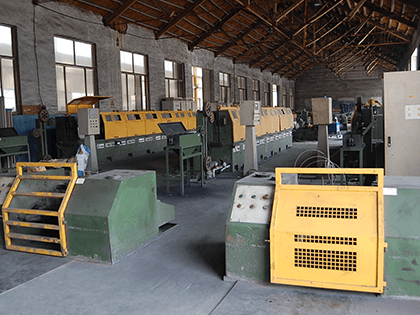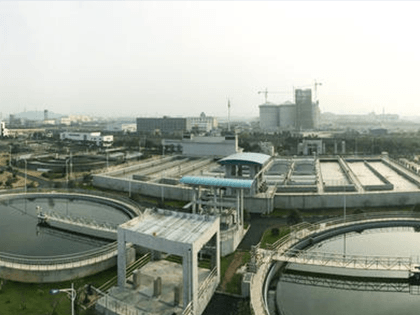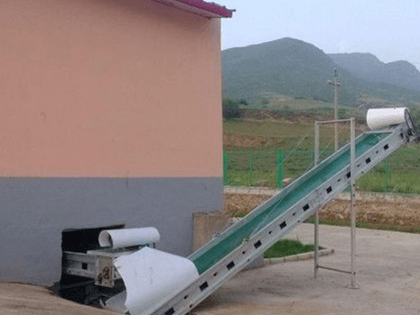Bad influence caused by printing and dyeing sludge to environment
Author: Taida machine Release time:2016-08-24
Reading guidance:Printing and dyeing sludge has hidden danger. Although sludge holds rich nutrients, it is also rich in harmful and toxic matters which will cause great harm to human and animal health. Seeing from the
Printing and dyeing sludge has hidden danger. Although sludge holds rich nutrients, it is also rich in harmful and toxic matters which will cause great harm to human and animal health.
Seeing from the potential hazards of the sludge, the sludge is not effective for disposal, there may be the following five aspects of harm.
1. Pathogenic contamination. Due to the sludge contains large amounts of organic matter, easy to decompose, bring the strong odor, with brought a large number of pathogens, pathogenic microorganisms and parasites). According to the test, in fresh sludge exist thousands of pathogens. These sludge such as arbitrary stacking, it will pollute the water and soil, resulting in infection of the food chain, and ultimately bring harm to human health.
2. Excessive salt pollution. Sludge due to the presence of a considerable amount of inorganic (such as salt or sodium sulfate, inorganic flocculants, etc.), containing higher salt content, such as inappropriate to put into the soil, lead to an increase in the electrical conductivity of the soil, the destruction of plant nutrient balance, inhibit the absorption of nutrients in the plant, even on plant root directly bring harm.
3. Excessive nitrogen and phosphorus pollution. Sludge due to the presence of a considerable amount of inorganic (such as salt or sodium sulfate, inorganic flocculants, etc.), containing higher salt content, such as inappropriate to put into the soil, lead to an increase in the electrical conductivity of the soil, destruction of the plant nutrient balance, inhibit the absorption of plant nutrients, even on plant root directly bring harm.
4.Organic polymer contamination. Sewage sludge contains no easy degradation, toxic residue period is long, the harm to the human body of organic polymer (such as: polycyclic aromatic hydrocarbons (PAHs), dimethyl phthalate, chlorinated organic carriers, phthalates, organic tin compounds, furan, PCBs, chlorinated benzenes and toluene, chloro phenol, ortho phenyl phenol, insecticides, etc.), these toxic and harmful substances such as access to water and soil will seriously pollute the environment.
5.Heavy metal contamination. In the process of sewage treatment, 70% to 90% of the heavy metal elements (such as chromium, manganese, zinc, cadmium, arsenic, cobalt, Sb, Hg, Cu, Ni) by adsorption or precipitation and transfer to the mud. Because sludge applied to soil, heavy metal will accumulate in the surface layer, but also through the fish, shrimp and other food chain and return to the "table". Also due to heavy metals generally have low solubility and stability, difficult to remove, so the potential toxicity in crops and animals and humans accumulation, great harm to human health.
6.High moisture content (generally, moisture content is between 75% to 90%); include toxic chemical matters;
7.Sludge organic compounds by microbial decomposition release harmful gases, dust, increased air pollution. As a result of the above characteristics of textile dyeing sludge determines the disposal and comprehensive utilization has great difficulty, processing cost and high yield meager has also become a sludge treatment markekization, industrialization obstacles. Various reasons resulting in sludge treatment is seriously lagging behind, has so far failed to start a comprehensive. Lack of effective treatment of sewage sludge, random Sinotrans or simple landfill stacking, will make sewage treatment the reduction of the pollution factor by sludge return to the environment and cause secondary pollution, directly endanger the ecological environment and human health, has become a new social and environmental problems.
Seeing from the potential hazards of the sludge, the sludge is not effective for disposal, there may be the following five aspects of harm.
1. Pathogenic contamination. Due to the sludge contains large amounts of organic matter, easy to decompose, bring the strong odor, with brought a large number of pathogens, pathogenic microorganisms and parasites). According to the test, in fresh sludge exist thousands of pathogens. These sludge such as arbitrary stacking, it will pollute the water and soil, resulting in infection of the food chain, and ultimately bring harm to human health.
2. Excessive salt pollution. Sludge due to the presence of a considerable amount of inorganic (such as salt or sodium sulfate, inorganic flocculants, etc.), containing higher salt content, such as inappropriate to put into the soil, lead to an increase in the electrical conductivity of the soil, the destruction of plant nutrient balance, inhibit the absorption of nutrients in the plant, even on plant root directly bring harm.
3. Excessive nitrogen and phosphorus pollution. Sludge due to the presence of a considerable amount of inorganic (such as salt or sodium sulfate, inorganic flocculants, etc.), containing higher salt content, such as inappropriate to put into the soil, lead to an increase in the electrical conductivity of the soil, destruction of the plant nutrient balance, inhibit the absorption of plant nutrients, even on plant root directly bring harm.
4.Organic polymer contamination. Sewage sludge contains no easy degradation, toxic residue period is long, the harm to the human body of organic polymer (such as: polycyclic aromatic hydrocarbons (PAHs), dimethyl phthalate, chlorinated organic carriers, phthalates, organic tin compounds, furan, PCBs, chlorinated benzenes and toluene, chloro phenol, ortho phenyl phenol, insecticides, etc.), these toxic and harmful substances such as access to water and soil will seriously pollute the environment.
5.Heavy metal contamination. In the process of sewage treatment, 70% to 90% of the heavy metal elements (such as chromium, manganese, zinc, cadmium, arsenic, cobalt, Sb, Hg, Cu, Ni) by adsorption or precipitation and transfer to the mud. Because sludge applied to soil, heavy metal will accumulate in the surface layer, but also through the fish, shrimp and other food chain and return to the "table". Also due to heavy metals generally have low solubility and stability, difficult to remove, so the potential toxicity in crops and animals and humans accumulation, great harm to human health.
6.High moisture content (generally, moisture content is between 75% to 90%); include toxic chemical matters;
7.Sludge organic compounds by microbial decomposition release harmful gases, dust, increased air pollution. As a result of the above characteristics of textile dyeing sludge determines the disposal and comprehensive utilization has great difficulty, processing cost and high yield meager has also become a sludge treatment markekization, industrialization obstacles. Various reasons resulting in sludge treatment is seriously lagging behind, has so far failed to start a comprehensive. Lack of effective treatment of sewage sludge, random Sinotrans or simple landfill stacking, will make sewage treatment the reduction of the pollution factor by sludge return to the environment and cause secondary pollution, directly endanger the ecological environment and human health, has become a new social and environmental problems.
:There are many obvious problems in agricultural application of sludge. Experts call on change :Reclamation disposal of sludge in heavy metal industry: recycle sludge containing copper
Relevant news
- 2016-01-12OSC-II Model Sludge Dryer Deliv
- 2016-01-1215T/Day Aerobic Dynamic Ferment
- 2016-01-12Matters Should Be Paid Attentio
- 2016-01-12Methods exploration of chemical
- 2016-01-12Analysis of circulating fluid b
Industry trends
- 2016-01-12Comparison Between Different Sl
- 2016-01-12Adding Calcium and Stable Dispo
- 2016-01-12Sludge Treatment: Methods for S
- 2016-01-12Use Dyeing Sludge As Resource
- 2016-01-12Current situation of sludge dis
Hot spots
Hot-sale products

- Leather Industry Sludge Drying
Production Capacity:1-2200t/h

- Welding Plating Sludge Drying S
Production Capacity:1-2200t/h

- Municipal Sludge Drying Solutio
Production Capacity:1-2200t/h

- Manure Sludge Drying Solution
Production Capacity:1-2200t/h
 中文
中文 English
English Home
Home
